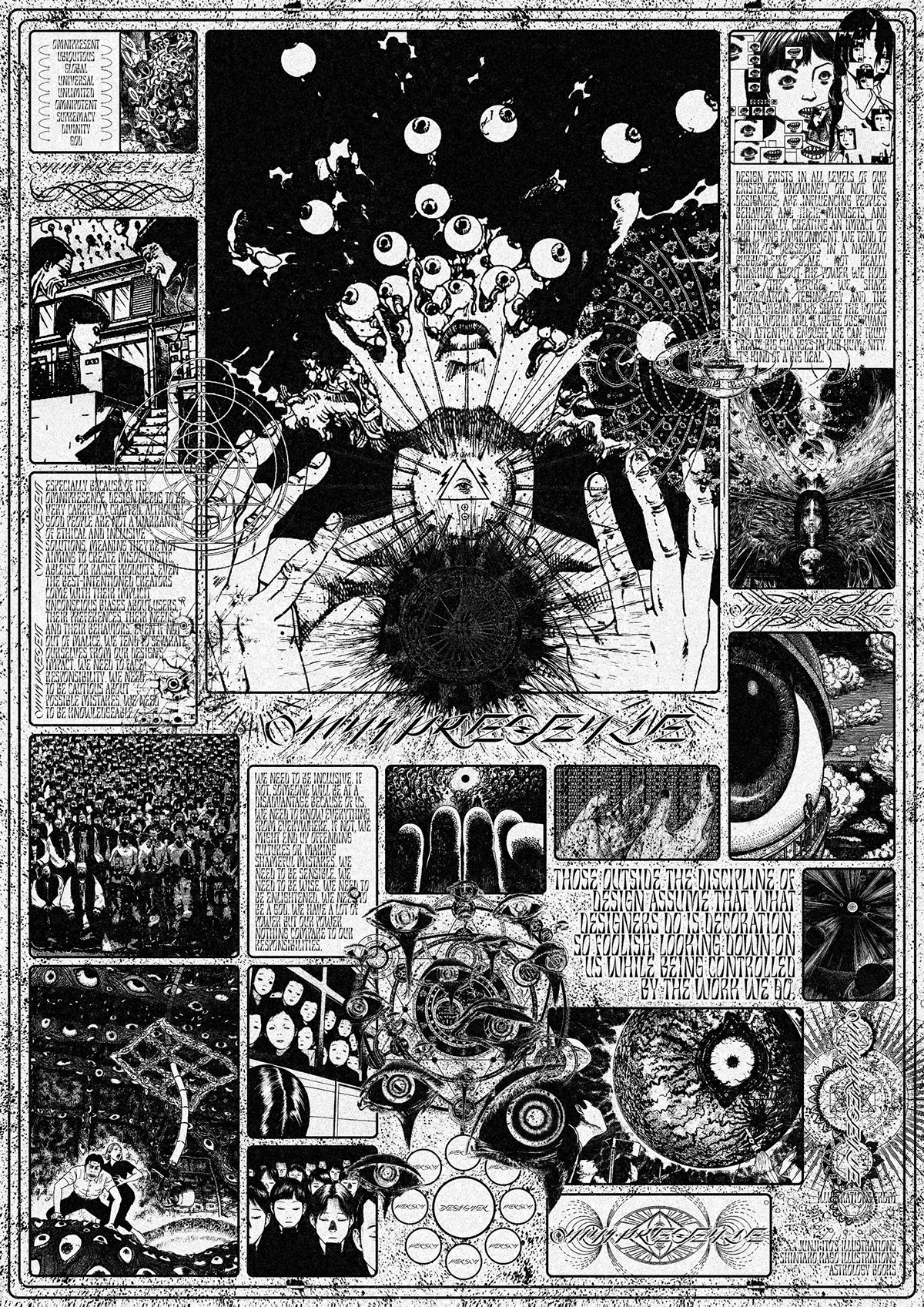Three posters about my view on what a designer needs to be a good designer were asked to be created —
— each poster needed to come from one word, one characteristic.
conceptual context

A person who calls themselves a designer is, in their fullness, an ordinary person, with their peculiarities, values, norms and conceptions. Being a designer, however, provides several states of reflection that not all individuals have, or at least, do not expose them in the same way. This project explores just that — the various dimensions of the designer as conscious being and their respective interdependencies — the designer's relationship with themselves, the designer's relationship with their work and the designer's relationship with third parties.

The graphics of the posters accompany the growth of the dimension in question, establishing that the poster that portrays the relationship between the designer and themselves is the one with the least amount of information (visually whiter and more empty), as it deals with a more closed scope, and the poster that demonstrates the relationship between the designer and third parties is the one that has the most information (visually more black and full), because it relates to a broader scope.

In parallel and within the dimensions of intervention, all these relationships between the designer and the respective dimension are taken to the extreme, that is, the interpretation of each relationship becomes dramatic and catastrophic. The content written on each poster individually informs this progression — the readings start with a positive tone and reasoning and ends in dreadful and ruthless thoughts. Thus, in addition to the joint evolutionary relationship of the posters (light to dark), there is an individualized progression within each one.

The visuals for the notion of harmful exaggeration is supported by illustrations by Shintaro Kago and Junji Ito, both mangakas who adopt a style of horror and gore. The content of each poster is also accompanied by scientific graphic elements.
POSTER 1
SELF-DOUBT

.

For the first poster, where the relationship between the designer and themselves is questioned, the selected word was “self-doubt”. Divided by blocks of text, “self-doubt” begins to present itself as a resource to aid the evolution of the person and ends up in an exorbitant exaggeration of the demands of skills and creativity of a designer who closes the text immersed in paranoia. The graphic elements originating from manga show characters in delirium, entering spirals of thoughts that are quickly destructive. The remaining symbolic elements are schematic representations of the intrapersonal relationship.
POSTER 2
CARE


For the second poster, where the relationship between the designer and their work/creation is questioned, the word selected was “care”. The feeling is initially used as a justification for a satisfied and possibly fortunate life, through dedication and concern with their work. Positivism ends up gradually degrading giving a spotlight to a compulsive addiction that jeopardizes the health and mental health of the designer. The manga elements show the obsession and madness of the characters and the architectural elements show the rigor and obstinacy for an ideal creation.
POSTER 3
OMNIPRESENCE


For the last poster, where the relationship between designer and third parties (society/world) is questioned, the selected word was “omnipresence”. It begins by describing the notion of omnipresence as an intangible impact of design in a society and the power that designers have over a possible better future. This power is, at the last moment, is seen as a burden that embraces a distressing responsibility. The manga illustrations are metaphorized in images of control and observation, where the designer can be both the observer (execution of power), translated in the presence of eyes, and the observed (intimidation of responsibility) translated in the presence of crowds. The schematic elements refer to entities of domain and astronomical dimensions.



The project exists in the union between the various dimensions of interpretation — ideological concept, visual concept, joint visual progression and individual textual progression. The excessive complexity of the project is similar to the exaggeration of all the analyses shown on the posters and is in harmony with the complexity of the designer in its entirety.




